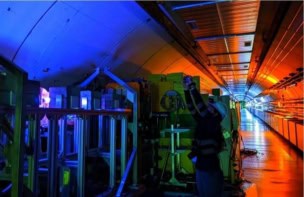This year marks the 60th anniversary of the direct detection of the neutrino and to celebrate, Physics World caught up with Art McDonald – who shared the 2015 Nobel Prize for Physics for his work on neutrinos. In this podcast, McDonald explains how his measurement of neutrino oscillation shattered the Standard Model of particle physics. He also looks ahead to the next generation of neutrino experiments and explains how they could solve some of the long-standing mysteries of physics
The neutrino was first proposed in 1930 by Wolfgang Pauli to explain a mysterious deficit of energy that was observed in the study of nuclear decay. Pauli famously joked that he had done a terrible thing by postulating a particle that could not be detected. But the particle was detected in 1956, and since then just about every discovery in neutrino physics has thrown up more questions than answers.
Because it does not fit in with the Standard Model, the neutrino is a prime target for the discovery of new physics. There have already been four Nobel prizes awarded for neutrino physics and thousands of physicists are working on experiments worldwide hoping to make the next big discovery.
In this podcast, Nobel laureate Art McDonald talks about the new SNO+ experiment that is located more than 2 km underground in a Canadian mine and which will look for hypothetical process called neutrinoless double-beta decay. Its discovery would be another bombshell in the history of neutrino physics because it would mean that the neutrino is its own antiparticle. Knowing the decay rate would also provide a direct measurement of the mass of the neutrino – a poorly known and much sought after quantity.
As well as being a laboratory for fundamental physics, SNO+ will also be an important tool for geophysicists studying the Earth’s crust – as McDonald explains. Other, more practical, applications of neutrino physics include fusion energy, says McDonald, who makes it very clear that the mysterious neutrino still has a lot more to give to science.



